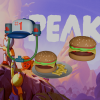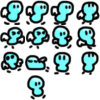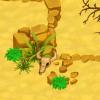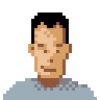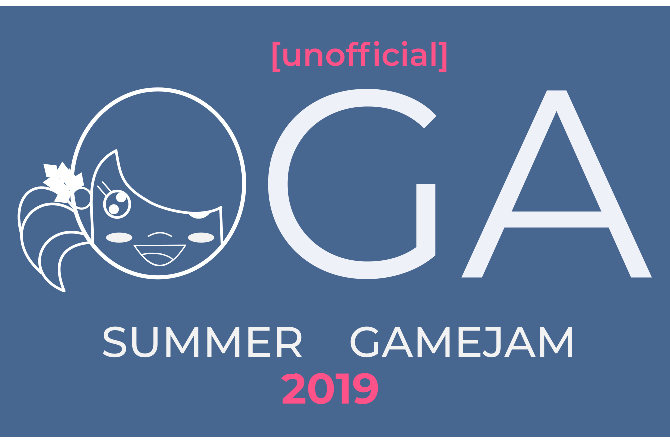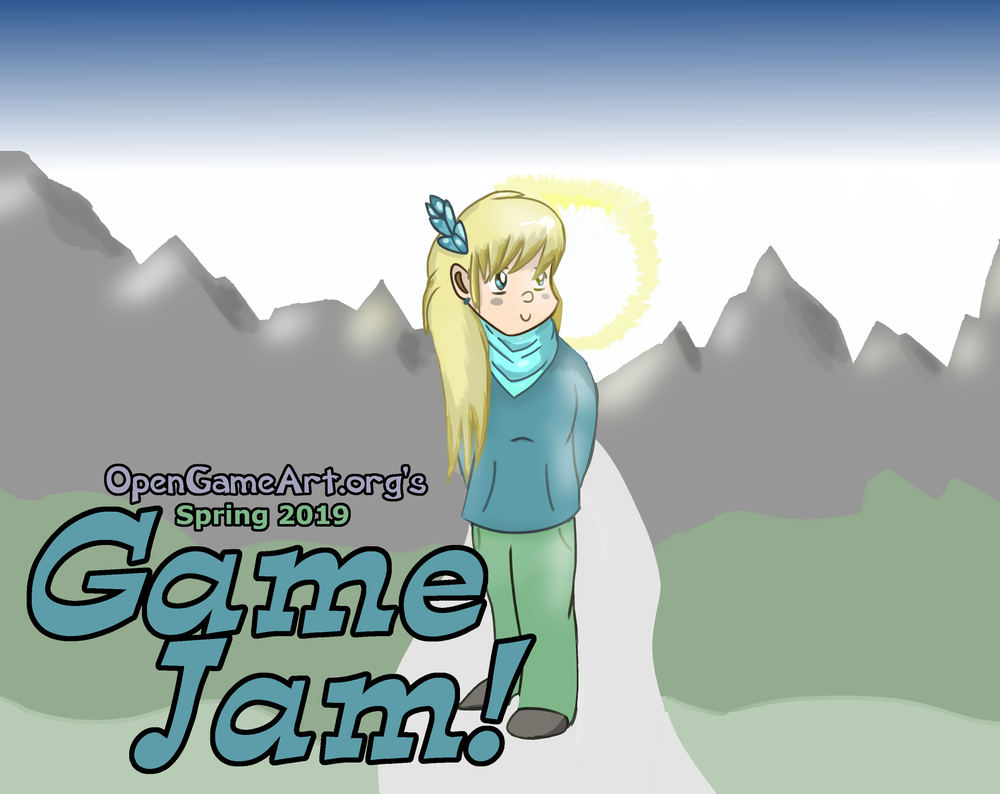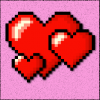Chat with us!
Discord: OpenGameArt
discord.gg/yDaQ4NcCux
Active Forum Topics - (view more)
- tools by blue_prawn
- need help creating a game by blue_prawn
- Is it possible to have a offline version of this site like wikipedia does? by blue_prawn
- AOM2 Global - Custom 3D Art Design for MMORPG PVP World by intelvega2
- Building a Library of Images for Everyone by Eric Matyas
- Mix distribution by glitchart
- Manic Minutes by Technopeasant
- Sharing My Music and Sound FX - Over 2500 Tracks by Eric Matyas
Recent Comments - (view more)
- Re: loopSong by maki299
- Re: Choir positive feedback 1 by zGameCreator
- Re: Character quotes by zGameCreator
- Re: SenshiStock Female Human Reference Packs by zGameCreator
- Re: p0ss's beat box sample pack by zGameCreator
- Re: Flying Dragon Rework by zGameCreator
- Re: Lil' angel guy by Homework Studio
- Re: 8-BIT Explosions #1 by Hamsandviche
Popular This Week - (view more)
Latest Art - (view more)
Latest Art by my Friends - (view more)
Featured Art - (view more)
I'd like to step up onto my soapbox for a moment and address something that I find somewhat lacking in FOSS games -- namely content creation and editing. In one sense, FOSS games have a leg up on the competition because all open source software is innately moddable, which is kind of the point. However, the practical reality of software moddability is that it's extremely dependant on the tools you provide.
Let me give an example. There's a game that came out fairly recently on the PS3 called Mod Nation Racers. It has a built-in track editor that's surprisingly easy to use and produces results in minutes that look like they took hours. When you've tested your track and are satisfied with it, you can upload it to a central server where other players can download it, try it, and rate it. Little Big Planet provides a similar experience. Of course, the downside of all of these things is that they're stored and moderated by Sony, so they tend to be deleted with no explanation the moment someone complains, and you don't "own" your creations, per se. In fact, in all likelihood, the license agreement with the software gives Sony ownership of all of your creations as well as your soul, testicles (or ovaries), and first-born child.
Yet, with all the crazy licensing stuff, limitations, and arbitrary deleting of content, people are still happy to continue creating. Why? It's just so fun and easy. What I'd like to propose is that we, as a community, try to move toward that level of fun, power, and simplicity for creating FOSS game content, and motivate our game players to help build our games content.
Of course, this isn't going to be easy. Writing a good UI is extremely difficult, and the motivation to do so is generally fairly low, since the people who would work on the UI (namely the coders) know their games inside and out and are the least likely to need them. As a rule of thumb, if you want to create a means of editing game content that's usable by regular users, it's best to find a guinea pig who's willing to sit down and try your editor without reading any instructions. An ideal game content editor should be so intuitive that users can start creating content immediately without wading through arcane (and often outdated) documentation. Mind you, I'm not saying that a user should never have to refer to a book or a guide, but you'll lose most people if they have to do it immediately. What you want to do is hook them with easy content creation so by the time they run into something complicated, they'll have designed three quarters of their level, and they'll be willing to poke through the manual so their hard work isn't wasted.
Also, built-in network support is an absolute must. If people can't download user-created content or submit their own content without poking around in the file system, you'll lose a lot of them there, too. In fact, ideally, the user should be able to create, modify, test, play, and upload their content without ever leaving the game, and without having to go through an arcane interface such as a console. A rating system (even a simple "number of favorites" type of thing like we have here at OGA) will help direct people toward the best content and give them something to aspire to with their own work.
What makes this all so challenging is that game levels are complex animals, and that makes it very difficult to allow the user to edit them in a simple way. Some complexity can be reduced by creating a set of default options that are generally true and then allowing the user to change them in a menu. Some things, such as custom logic, can only be reduced so far while still providing rich functionality, and in those cases, it's important to present instruction in the simplest and most accessible way possible, namely instructional videos.
In summary: A great content editor is fun, usable without reading documentation, accessible from inside the game engine, highly capable, and networked. If we really want user-created content in FOSS games to take off, that's where we need to go, and it can be done!
Now, a couple shout-outs to projects that are, in my opinion, moving in the right direction on this:
- Syntensity, and other projects that use the Sauerbraten Engine. I'm not a huge fan of Sauerbraten's editing interface, as I don't find it particularly intuitive, but it's leaps and bounds ahead of the competition in terms of allowing users to modify game content.
- Wesnoth has a good map editor and a large, active community, but when it comes time to create campaigns and scenarios, you still have to venture into the scary realm of text editors. Still, Wesnoth's campaign server allows users to contribute their work, and then players can download it from inside the game with no fuss whatsoever.
- Tiled makes it easier for developers to integrate a full-featured tile map editor by allowing you to write plugins for exporting maps in your own format.
- The Gluon Project aims to be a complete, easy-to-use FOSS solution for creating, distributing, and playing games.
The above is by no means an exhaustive list, so if you think of a project that deserves credit for easy content creation, drop me a line, and I'll add it. :)
Peace,
Bart
- bart's blog
- Log in or register to post comments
Hey folks!
We've come to the decision that all the art that OGA commissions (are that OGA paid for) from here on should be licensed CC-BY, in addition to CC-BY-SA and GPL. We figure that not having the share-alike requirement will make it easier for indie projects to include our art without worrying about the legal implications of a share-alike license. Some of our older commissions (namely the anime base sprites) have been changed to include this option as well. Over the next few weeks, we'll contact the artists who worked on other commissioned works and ask them for permission to make this change.
For those of you who aren't intimiately familiar with the various CC licenses, CC-BY only requires you to include an attribution in your credits (including a link to OGA), which should be easy for everyone.
If you use our CC-BY art in your games, we would of course appreciate it if you contributed some art back to OGA, but that is by no means required. Just a link in your credits is enough. :)
Peace,
Bart
- bart's blog
- Log in or register to post comments
One of the most important (if least mentioned) aspects of game design is how smoothly the game operates. Your game can have snazzy features and a great concept, but for it to be really fun to play, it can't handle like a constipated tank. Unfortunately, avoiding this issue isn't exactly easy. Smoothness of a user interface is something that's difficult to quantify, but I'm going to give it my best shot.
First off, let's take a quick look at a game that gets it right. A couple weeks ago I raved briefly about the delightfully smooth experience that is Frogatto. What is it, exactly, that makes Frogatto so smooth? There are a couple of things. First, the engine runs well on typical modern hardware, so it has an excellent framerate. Nothing feels smooth when you're chugging along at five frames per second, and Frogatto avoids this issue entirely. More than that, though, it's Frogatto's design that makes it smooth. For instance, if you've downloaded the game already, try walking around, and watch what happens when Frogatto changes directions. Seriously, go try it right now. I promise this blog entry will be here when you get back.
Now, did you notice the amount of time it takes for Frogatto to turn around? It's not abslutely instantaneous, but at the same time, it's very responsive. If it took him too long to turn around, the game would be annoying to play -- that much is obvious. But here's the kicker. If he turned around instantaneously, the game would feel klunky. That small amount of time it takes for him to decelerate and begin moving the other direction adds a level of immersion to the game that wouldn't otherwise be there, because Frogatto acts physically the way you might expect him to in the real world -- a way your brain is already hard-wired to understand. As a consequence, Frogatto's controls feel very "real" and natural.
Some of you may be thinking, well, my game is a turn-based strategy game, so none of this applies to me. If that is, in fact, what you are thinking, then you are incorrect. That touch of physical realism that makes Frogatto fun to play can also be applied to your user interface. Consider the lowly drop-down menu, for instance. The easiest way to implement a drop-down menu is just to have it appear instantly when the user clicks on a certain item. Unfortunately, this is also the least pleasing to the eye. If you want the menu to feel natural, you need some sort of transition, perhaps sliding it out. But that's not quite enough! Not only does the menu have to slide out, it has to slide out in a believable way. This means that it can't just slide out at a constant velocity, but rather, it should start slowly, get faster, then slow down again, and finally stop, and it should do all of this quickly enough that the user doesn't feel like they're waiting for it.
Now, perhaps this is all just glitz and flash -- and you can certainly make a pretty amazing game while ignoring these things altogether -- just look at Dwarf Fortress, for instance. People don't spend countless hours playing it for the smooth and intuitive gameplay. Nevertheless, if you want your game to have that finished feel, take some time to work on making the controls and UI as smooth as you possibly can. Keep your transitions fast but not instantaneous, and you'll do well.
Bart
P.S. We're still looking for 4 more new subscribers this month. If you can spare 3 bucks a month and want to help us buy new art for the community, hit the "Donate or Subscrube" button on the right. :)
- bart's blog
- Log in or register to post comments
Greets!
This coming month, we're going to try something different in terms of raising commission money. Instead of going for a fixed amount, I'd like to aim for five new subscribers. So if you're reading this and you can afford a couple dollars a month, hit the "Donate or Subscribe" button on the right side of the page and help us reach our goal!
This is spelled out on the site, but it bears repeating here: Subscribing to OGA doesn't get you any exclusive benefits. What it does do is buy more commissioned art of the community, including yourself. The more donations we can pull in on a monthly basis, the faster our collection will grow, and the more ambitious projects we'll be able to commission. And really, how often can you spend a little money and buy something for everyone? :)
Peace!
Bart
EDIT: We're now participating in the Flattr beta. If you're in the beta and you want to Flattr us, there's a button on the right. :)
- bart's blog
- Log in or register to post comments
I know there are a lot of FOSS game projects out there that keep an eye on OGA, which makes us very happy. If you're reading this and you're a maintainer of a FOSS game project, there's a very easy way you can get more out of OGA. Namely, make a list of the art assets you need. It doesn't need to be a complete list, even -- just a few things you can think of off the top of your head. When you have your list, put it up on your forum or wiki and put a link to it on our forum, or just type up a forum post here on OGA with the list and keep an eye on it. Be sure to specify which license(s) you prefer.
You'd be surprised how often our contributors are sitting around idling in IRC, looking for ideas for things they could work on. Make that work to your advantage and get some game assets out of it. :)
Peace,
Bart
- bart's blog
- Log in or register to post comments








